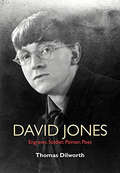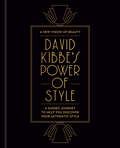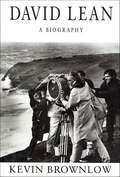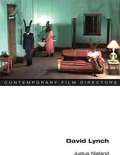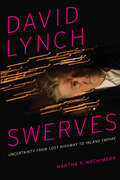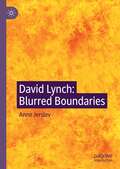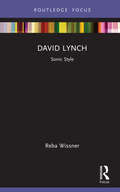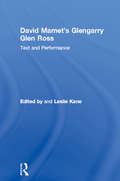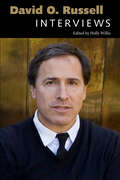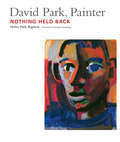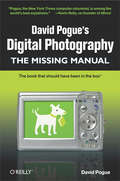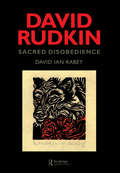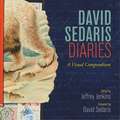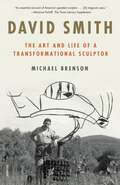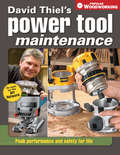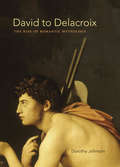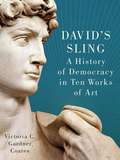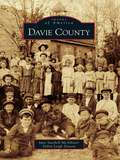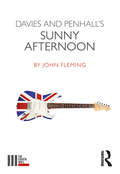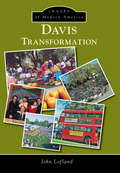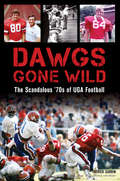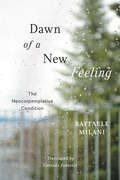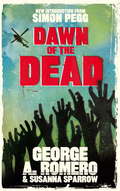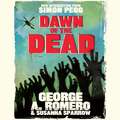- Table View
- List View
David Jones: Engraver, Soldier, Painter, Poet
by Thomas DilworthAmong the revolutions of the last century, none was more important or potentially more lasting than the one in the arts called "Modernism". Among the giants of that movement were writers who changed our conceptions of poetry and prose forever. Now, well into the new century, we can look back to admire and reflect on figures from that period. Last year saw biographies of two monumental poets of Modernism: Robert Crawford's first volume on T. S. Eliot, and David Moody's concluding third volume on the life of Ezra Pound.We are excited to announce the first full–length critical biography of the third member, too often overlooked, of that extraordinary group. The beautifully illustrated David Jones: Engraver, Soldier, Painter, Poet by Thomas Dilworth will stand for generations as the great biography this wonderful artist deserves.Jones (1895–1974) was a painter, a wood– and copper–engraver and maker of painted inscriptions, but it was as a poet that he left his most lasting mark. Eliot called him "one of the most distinguished writers of my generation" and Dylan Thomas said he "would like to have done anything as good as David Jones has done." Auden praised his poem In Parenthesis as "the greatest book [ever] about the Great War", and The Anathemata as one of the "truly great poems in Western Literature." His work, the whole of it, enables him to stand alongside Eliot, Pound, and James Joyce as an incomparable figure in literary Modernism.
David Kibbe's Power of Style: A Guided Journey to Help You Discover Your Authentic Style
by David KibbeWelcome to legendary style guru David Kibbe&’s program of Love-Based Beauty, filled with revolutionary techniques to unlock the secret superpower that is your Authentic Style. Prepare for a guided journey to play your way to style! Kibbe&’s ingenious method of games will take you by the hand to uncover all the things that are unique to you. His aspirational vision of beauty will help you completely redefine what style is, what it can do for you, and how it can help you uplift the world around you. As you travel this journey, you will learn such visionary concepts as: beauty comes from individuality; style evolves from identity; there are no &“flaws&”—only unique characteristics; you are exactly who you are &“supposed&” to be; you are a star—it is your irrefutable birthright.This trail-blazing style bible includes:• 82 dazzling visuals representing all ages, body sizes and backgrounds.• Overhauls and updates of his groundbreaking Image Identity and Color systems.• His cutting-edge recipes for Makeup, Hair, and Victorious Shopping.Here you will find all you need to banish the old, restrictive style rules of yesterday and smash the stifling boxes of stereotypes. David Kibbe&’s Power of Style will give you everything you need to know to capture your star quality and reveal it to the world with confidence and joy! This game-changing guide is your definitive style companion for the twenty-first century.
David Lean: A Biography
by Kevin BrownlowThe life and its biographer provide a landmark work on the cinema. Emerging from a childhood of nearly Dickensian darkness, David Lean found his great success as a director of the appropriately titled Great Expectations.There followed his legendary black-and-white films of the 1940s and his four-film movie collaboration with Noel Coward. Lean's 1955 film Summertime took him from England to the world of international moviemaking and the stunning series of spectacular color epics that would gain for his work twenty-seven Academy Awards and fifty-six Academy Award nominations. All are classics, including The Bridge on the River Kwai, Lawrence of Arabia, Doctor Zhivago, and A Passage to India.Kevin Brownlow, a film editor in his own right and author of the seminal silent film trilogy initiated with The Parade's Gone By. . ., brings to Lean's biography an exhaustive knowledge of the art and the industry.One learns about the making of movies as realized by a master, but also of the highly personal costs of genius. The troubled Quaker family from which Lean came influenced his relationship with his son, his brother, and his six wives. Yet he showed in his work a deep understanding of humanity.The vastness of this scholarly and entertaining enterprise is augmented by sixteen pages of scenes from Lean's color films, thirty-two pages from his black-and-white movies, and throughout the text a vast number of photographs from his life and location work.
David Lynch (Contemporary Film Directors)
by Justus NielandA key figure in the ongoing legacy of modern cinema, David Lynch designs environments for spectators, transporting them to inner worlds built by mood, texture, and uneasy artifice. We enter these famously cinematic interiors to be wrapped in plastic, the fundamental substance of Lynch's work. This volume revels in the weird dynamism of Lynch's plastic worlds. Exploring the range of modern design idioms that inform Lynch's films and signature mise-en-scène, Justus Nieland argues that plastic is at once a key architectural and interior design dynamic in Lynch's films, an uncertain way of feeling essential to Lynch's art, and the prime matter of Lynch's strange picture of the human organism. Nieland's study offers striking new readings of Lynch's major works (Eraserhead, Blue Velvet, Wild at Heart, Mulholland Dr., Inland Empire) and his early experimental films, placing Lynch's experimentalism within the aesthetic traditions of modernism and the avant-garde; the genres of melodrama, film noir, and art cinema; architecture and design history; and contemporary debates about cinematic ontology in the wake of the digital. This inventive study argues that Lynch's plastic concept of life--supplemented by technology, media, and sensuous networks of an electric world--is more alive today than ever.
David Lynch Swerves: Uncertainty from Lost Highway to Inland Empire
by Martha P. NochimsonA study of the role of quantum physics and the Holy Vedas in the later works of filmmaker David Lynch.“The richness of Nochimson’s writing, the thoroughness of her interpretation, and her assured stance in opposition to the canon of Lynch criticism to date all make David Lynch Swerves a must-read for anyone interested in the films of David Lynch. Or, for that matter, the state of film criticism in American culture. If criticism at its best is a form of revelation, then this is practically a new gospel.”―House of SpeakEasyBeginning with Lost Highway, director David Lynch “swerved” in a new direction, one in which very disorienting images of the physical world take center stage in his films. Seeking to understand this unusual emphasis in his work, noted Lynch scholar Martha Nochimson engaged Lynch in a long conversation of unprecedented openness, during which he shared his vision of the physical world as an uncertain place that masks important universal realities. He described how he derives this vision from the Holy Vedas of the Hindu religion, as well as from his layman’s fascination with modern physics.With this deep insight, Nochimson forges a startlingly original template for analyzing Lynch’s later films—the seemingly unlikely combination of the spiritual landscape envisioned in the Holy Vedas and the material landscape evoked by quantum mechanics and relativity. In David Lynch Swerves, Nochimson navigates the complexities of Lost Highway, The Straight Story, Mulholland Drive, and Inland Empire with uncanny skill, shedding light on the beauty of their organic compositions; their thematic critiques of the immense dangers of modern materialism; and their hopeful conceptions of human potential. She concludes with excerpts from the wide-ranging interview in which Lynch discussed his vision with her, as well as an interview with Columbia University physicist David Albert, who was one of Nochimson’s principal tutors in the discipline of quantum physics.“The book succeeds in making more sense of Lynch's more puzzling works . . .Recommended.” —Library Journal“This book is nothing less than a revelation of a new David Lynch . . .so convincing are the book’s claims, so well-substantiated and explained. . . . The focus on the physics of Lynch is a true paradigm shift in our understanding of the director. Nothing will ever be the same in Lynch studies again.” —Eric G. Wilson, Professor of English, Wake Forest University, author of The Strange World of David Lynch: Transcendental Irony from Eraserhead to Mulholland Dr.
David Lynch: Blurred Boundaries
by Anne JerslevThis book distinguishes itself from earlier books on David Lynch by taking in-depth consideration of his entire oeuvre. Besides his films and the Twin Peaks series, David Lynch: Blurred Boundaries includes discussions of Lynch’s paintings and drawings, music videos, commercials, short experimental works, digital projects on the YouTube channel David Lynch Theater and the Internet documentary The Interview Project, as well as the exhibition The Air is on Fire, which Jerslev regards as one of Lynch’s main works. David Lynch: Blurred Boundaries offers a view of Lynch’s total work, in which one medium or genre is no more important than the other. It discusses the ways in which Lynch has worked throughout his career with different art forms and has right from the start experimented with the blurring of boundaries between media and genres. And it discusses ways Lynch creates atmospheres by different audio-visual and visual means.
David Lynch: Sonic Style (Filmmakers and Their Soundtracks)
by Reba WissnerDirector David Lynch is best known for films that channel the uncanny and the weird into a distinct "Lynchian" aesthetic, in which sound and music play a key role: Lynch not only writes his intended sounds into the script but also often takes on the role of creating the sounds himself. This concise study explores what makes Lynch’s sonic imprint distinct, breaking down three different sound styles that create Lynch’s sound aesthetic across his films. Showing how sound offers new insights into the aesthetic and narrative work of Lynch’s filmmaking, this book highlights new dimensions in the work of a key American auteur and deconstructs the process of building a unique sound world.
David Mamet's Glengarry Glen Ross: Text and Performance (Studies In Modern Drama Ser. #Vol. 8)
by Leslie KaneFirst published in 1997. Routledge is an imprint of Taylor & Francis, an informa company.
David O. Russell: Interviews (Conversations with Filmmakers Series)
by Holly WillisDavid O. Russell (b. 1958) boasts a diverse body of work as a writer and director, spanning multiple genres and featuring radically differing aesthetic styles. While his early work comically explored taboo subjects with unerring directness, he has also investigated politics with explosive satire. In his most recent films, including American Hustle and Silver Linings Playbook, Russell examines characters and situations that are at once everyday and also extraordinary. Whatever the project, Russell is driven to explore the idiosyncrasies that make each character human, and he extends that curiosity to explore what makes each actor unique. His attentiveness to his cast members has earned him the label of "actor's director," due in no small part to the many nominations and awards earned by a long list of Hollywood stars in his movies.Russell has also become one of our era's most interesting formal stylists as he adopts a visual design appropriate to each of his film's thematic concerns. The result may be a color palette resembling the washed-out pages of a newspaper achieved by manipulating the film stock for Three Kings or the tumultuous opening of The Fighter when an audacious, roving camera plunges viewers straight into the story from the very first shots of the film. Rather than building a signature style, Russell has instead tested the varied possibilities of cinematic expression.This career-spanning volume features conversations with scholars and journalists as well as filmmakers. Speaking to directors like Alexander Payne and Spike Jonze, Russell contextualizes each of his films, offers an intimate account of his evolving writing and directing process, and opens his life to reveal how a remarkable body of work has come to be.
David Park, Painter: Nothing Held Back
by Helen Park BigelowA half century after his death, David Park (1911-1960) is recognized as one of America's most important twentieth-century painters. He was the first of the brilliant post-World War II generation of artists to break with Abstract Expressionism's hegemony and return to painting recognizable subjects, most powerfully the human figure. Park's original cohorts of Bay Area Figurative painters were his close friends Richard Diebenkorn, Elmer Bischoff, and Hassel Smith. All outlived him--Smith by nearly fifty years--and enjoyed recognition and fame during their lifetimes. Park's reputation is just now fully coming into its own.In David Park, Painter, Park's younger daughter, writer Helen Park Bigelow, paints a mesmerizing, deeply moving portrait of her father's life and early, difficult death. Park left high school in New England without graduating and came west in order to paint. He married Lydia (Deedie) Newell when he was nineteen and was the father of two by the time he was twenty-two. We are brought into a family rich with moral conviction, ingenuity, smart and gifted friends, music, and art: four complex people guided and inspired by values of integrity. Those same values guided and inspired David Park's painting.Yet this is much more than an artist biography. David Park, Painter is a skillful blend of memoir and observations about life in the Bay Area just before and just after World War II, when some of America's most original, even radical, artists and writers gathered there. This close-up portrayal is unlike other accounts of artists. It is the story of a family built on the love and dedication of one man who held nothing back from his art, and of the spirit of the wife and daughters who supported him. Richard Armstrong, in reflecting on Park's generation of artists in his foreword to this beautiful book, observes that David Park, Painter is "especially valuable as we persist in seeking to make real and human the commanding artistic figures."
David Pogue's Digital Photography: The Missing Manual (Missing Manual)
by David PogueIf you're ready to jump into digital photography or would like to increase the skills you already have, David Pogue's Digital Photography: The Missing Manual is just what you need. Bestselling author David Pogue provides a no-nonsense guide to the entire process, including how to: buy and use a digital camera; get the same photographic effects as the pros; manage the results on your Mac or PC; edit photos; and, finally, share the results with your adoring fans -- on paper, online, or on mugs, jigsaw puzzles, and blankets. After reviewing hundreds of digital cameras and photo services in his weekly New York Times column, David Pogue knows digital photography. With this new Missing Manual you will:Get expert advice on how to choose a digital camera, including information on the only specs that matter. (Hint: it's not about megapixels). Learn the basics of lighting, composition, and shooting lots of photos Understand how to choose the best camera settings for 20 different scenarios Unravel the problems of correcting images and storing them Learn David's tips and tricks for sharing and printing images Get a special troubleshooting section you can turn to when things go wrong David Pogue's witty, authoritative voice has demystified the Mac, Windows, iPods and iPhones for millions of readers. Now, he offers step-by-step instructions and plenty of friendly advice to help you join in the fun and get real satisfaction from digital photography.
David Rudkin: An Expository Study of his Drama 1959-1994
by David Ian Rabey David I. RabeyDr. Rabey's profound critical study of David Rudkin's drama constitutes an in-depth evaluation of this unique dramatist, re-assessed in the light of his bi-sexuality and Anglo-Irish origins. This key study includes insights from noted performers of Rudkin's work, including Ian Hogg, Peter McEnery, Ian McDiarmid, Gerard Murphy, and Charlotte Cornwell. It is a fully authorized study with exclusive reference to archival material which includes some frank and urgent interview contributions from the dramatist himself, who is usually deemed reclusive. It is enhanced by Dr. Rabey's own experience of Wales, Ireland, and the English Black Country for his exposition of Rudkin's mythic sense of Celtic and Mercian history.
David Sedaris Diaries: A Visual Compendium
by David Sedaris Jeffrey JenkinsA remarkable illustrated volume of artwork and images selected from the diaries David Sedaris has been creating for four decadesIn this richly illustrated book, readers will for the first time experience the diaries David Sedaris has kept for nearly 40 years in the elaborate, three-dimensional, collaged style of the originals. A celebration of the unexpected in the everyday, the beautiful and the grotesque, this visual compendium offers unique insight into the author's view of the world and stands as a striking and collectible volume in itself.Compiled and edited by Sedaris's longtime friend Jeffrey Jenkins, and including interactive components, postcards, and never-before-seen photos and artwork, this is a necessary addition to any Sedaris collection, and will enthrall the author's fans for many years to come.
David Smith: The Art and Life of a Transformational Sculptor
by Michael Brenson“An essential account of America’s greatest sculptor . . . [A] magnum opus.” —Marjorie Perloff, The Times Literary SupplementThe landmark biography of the inscrutable and brilliant David Smith, the greatest American sculptor of the twentieth century. David Smith, a pioneer of Abstract Expressionism, did more than any other sculptor of his era to bring the plastic arts to the forefront of the American scene. Central to his project of reimagining sculptural experience was challenging the stability of any identity or position—Smith sought out the unbounded, unbalanced, and unexpected, creating works of art that seem to undergo radical shifts as the spectator moves from one point of view to another. So groundbreaking and prolific were his contributions to American art that by the time Smith was just forty years old, Clement Greenberg was already calling him “the greatest sculptor this country has produced.” Michael Brenson’s David Smith: The Art and Life of a Transformational Sculptor is the first biography of this epochal figure. It follows Smith from his upbringing in the Midwest, to his heady early years in Manhattan, to his decision to establish a permanent studio in Bolton Landing in upstate New York, where he would create many of his most significant works—among them the Cubis, Tanktotems, and Zigs. It explores his at times tempestuous personal life, marked by marriages, divorces, and fallings-out as well as by deep friendships with fellow artists like Helen Frankenthaler and Robert Motherwell. His wife Jean Freas described him as “salty and bombastic, jumbo and featherlight, thin-skinned and Mack Truck. And many more things.” This enormous, contradictory vitality was true of his work as well. He was a bricoleur, a master welder, a painter, a photographer, and a writer, and he entranced critics and attracted admirers wherever he showed his work. With this book, Brenson has contextualized Smith for a new generation and confirmed his singular place in the history of American art.
David Thiel's Power Tool Maintenance: Peak Performance and Safety for Life
by David ThielGet a Lifetime of Peak Performance from Your Woodworking Power Tools
David to Delacroix
by Dorothy JohnsonIn this beautifully illustrated study of intellectual and art history, Dorothy Johnson explores the representation of classical myths by renowned French artists in the late eighteenth and early nineteenth centuries, demonstrating the extraordinary influence of the natural sciences and psychology on artistic depiction of myth. Highlighting the work of major painters such as David, Girodet, Gérard, Ingres, and Delacroix and sculptors such as Houdon and Pajou, David to Delacroix reveals how these artists offered innovative reinterpretations of myth while incorporating contemporaneous and revolutionary discoveries in the disciplines of anatomy, biology, physiology, psychology, and medicine. The interplay among these disciplines, Johnson argues, led to a reexamination by visual artists of the historical and intellectual structures of myth, its social and psychological dimensions, and its construction as a vital means of understanding the self and the individual's role in society. This confluence is studied in depth for the first time here, and each chapter includes rich examples chosen from the vast number of mythological representations of the period. While focused on mythical subjects, French Romantic artists, Johnson argues, were creating increasingly modern modes of interpreting and meditating on culture and the human condition.
David's Sling
by Ph.D. Victoria C. CoatesThroughout Western history, the societies that have made the greatest contributions to the spread of freedom have created iconic works of art to celebrate their achievements. Yet despite the enduring appeal of these works-from the Parthenon to Michelangelo's David to Picasso's Guernica-histories of both art and democracy have ignored this phenomenon. Millions have admired the artworks covered in this book but relatively few know why they were commissioned, what was happening in the culture that produced them, or what they were meant to achieve. Even scholars who have studied them for decades often miss the big picture by viewing them in isolation from a larger story of human striving.David's Sling places into context ten canonical works of art executed to commemorate the successes of free societies that exerted political and economic influence far beyond what might have been expected of them. Fusing political and art history with a judicious dose of creative reconstruction, Victoria Coates has crafted a lively narrative around each artistic object and the free system that inspired it.This book integrates the themes of creative excellence and political freedom to bring a fresh, new perspective to both. In telling the stories of ten masterpieces, David's Sling invites reflection on the synergy between liberty and human achievement.
Davie County (Images of America)
by Jane S. Mcallister Debra DotsonDavie County, carved out of Rowan County and named for a Revolutionary War hero in 1836, boasts a rich history. The Great Wagon Road brought many settlers to the area in the 18th century, including Daniel Boone's parents--buried in Joppa Cemetery in Mocksville. The National Historical Register includes 16 county sites, among them the Cooleemee Plantation, home to the Hairston family since 1817. Davie County's agricultural heritage is complemented by its progressing commercial and retail development. Images of America: Davie County commemorates the area's communities, people, livelihoods, pastimes, and traditions, including the annual Masonic Picnic, observed for over 130 years.
Davies and Penhall's Sunny Afternoon
by John FlemingWhen ‘You Really Got Me’ exploded on Swinging London in 1964, the Kinks forever changed the course of rock ’n’ roll. Ray Davies and Joe Penhall’s Olivier Award-winning Sunny Afternoon (2014) covers the band’s formative years of 1964–7, when four working- class North London lads broke through to become one of the most unlikely and influential rock bands of the 1960s. Mixing the comic adventures of ‘Dave the Rave’ with the touching introspection of Ray’s sometimes fragile psyche, Joe Penhall’s script weaves Ray Davies’ songs, both the hits and lesser-known works, into one of the finest jukebox musicals of the new millennium. Drawing on a wealth of background material, John Fleming examines the blend of events and songs selected, reconsidering the relationship between biography and drama to shed new light on the Kinks and the musical that tells their story.
Davis: Transformation (Images of Modern America)
by John LoflandDavis has undergone a major transformation from the mid-20th century to today, growing from a small college town of about 3,000 residents and 1,500 students to a world-class university city of 80,000 area residents and 35,000 students. Major features of this revolution include the creation of a vibrant downtown, environmentally sensitive politics, diverse and innovative neighborhoods, and a citywide system of bike lanes. A thriving University of California at Davis campus was the economic dynamo that attracted talented students and faculty. Their environmentalist values spurred innovations in solar energy, waste recycling, bicycle infrastructure, subsidized public transit, energy-saving construction, and farm-to-fork localization of food supplies, among other new civic directions that remain an essential part of the city's culture today.
Dawgs Gone Wild: The Scandalous ’70s of UGA Football
by Patrick Garbin Steve Shag" DavisIn the mid-�70s, the University of Georgia football team caused quite a stir off the field. Several players had encounters with the manipulative �Godfather of Pro Wrestling� and his money-for-sex scheme. A careless prank aboard a team-chartered airplane resulted in a bomb scare and an FBI inquiry. The mysterious death of a standout teammate in 1976 remained unsolved for decades. Despite it all, a valiant and tenacious head coach and his acclaimed �Junkyard Dogs� defied the odds and developed a celebrated championship team. UGA football writer and historian Patrick Garbin, using extensive interviews with former players and coaches, delivers an astounding and, at times, appalling true tale of sex, drugs and wild debauchery in college football.
Dawn of a New Feeling: The Neocontemplative Condition
by Raffaele MilaniComputers have become omnipresent in recent decades, affecting all aspects of modern life and influencing creative pursuits in art, architecture, music, and film. One consequence of this seemingly irreversible trend is its effect on the perception of the aesthetic object, and indeed of nature itself.Dawn of a New Feeling acknowledges that computers have become a formidable tool for creating new and entertaining art forms, while contending that virtual reality is not conducive to meditations on the aesthetic object. Virtual or augmented reality, Raffaele Milani argues, is illusory and blunts the viewer’s capacity for feeling a genuine connection with a work of art. First describing how modernity and post-modernity are entangled with virtual reality, engendering linguistic and anthropological confusion in which art seems to have lost its meaning, Milani then contrasts these developments with classical art forms and reflects on the ways in which traditional art objects stimulate an appreciation of nature, which, upon contemplation, appears as an aesthetic object itself. The saturation of our culture by mass media, he argues, can give rise to a renewed desire to experience a more intimate communication with nature.By identifying reading, contemplation, and care for nature as activities that help us to escape the mental atrophy of a web-dominated world and find refuge from the chaos of virtual mediation, Dawn of a New Feeling offers a reinterpretation of contemplative approaches to appreciating aesthetics and to understanding the profound nature of artistic vision.
Dawn of the Dead: The original end of the world horror classic
by George Romero Susanna SparrowWHEN THE END OF THE WORLD COMES, WHAT WILL YOU BE DOING?The classic horror that inspired a genre: if you haven't read this yet, you need to. If you have, you'll want to again. Includes a brilliant and exclusive introduction from Simon Pegg.When there is no more room in hell, the dead will walk the earth.George A. Romero's iconic film and novel terrified generations.Now Dawn of the Dead is back to terrify once more.The world is being devastated by zombies. No one knows how far they have spread, or how to stop them. And as the living fight to save themselves, society collapses. Four people escape the chaos of downtown Philadelphia and find shelter in a shopping mall. As the survivors exhaust their greed and the undead scrape at the doors, the refuge becomes a prison.And soon there will be nowhere left to hide . . .
Dawn of the Dead: The original end of the world horror classic
by George Romero Susanna SparrowWhen there is no more room in hell, the dead will walk the earth.George A. Romero's iconic film and novel terrified generations.Now Dawn of the Dead is back to terrify once more.The world is being devastated by zombies. No one knows how far they have spread, or how to stop them. And as the living fight to save themselves, society collapses. Four people escape the chaos of downtown Philadelphia and find shelter in a shopping mall. As the survivors exhaust their greed and the undead scrape at the doors, the refuge becomes a prison.And soon there will be nowhere left to hide . . .The classic horror that inspired a genre: if you haven't read this yet, you need to. If you have, you'll want to again.Includes a brilliant and exclusive introduction from Simon Pegg.
Day Fighter Aces of the Luftwaffe 1939–42 (Casemate Illustrated #Cis0017)
by Neil PageA pictorial history of Hitler’s fighter pilots that “will be of great interest to aircraft modelers and aviation historians alike” (AMPS Indianapolis).Military and aviation history enthusiasts have always been interested in the fighter pilots of Hitler’s Luftwaffe. Around five hundred Luftwaffe fighter pilots were awarded the Knight’s Cross, accumulating huge numbers of missions flown. A similar number achieved more than forty victories—more than the two leading USAF and RAF fighter pilots. Indeed, some of their stories are extraordinary. Fighting from the Arctic Circle to the North African deserts, from the Caucasus in the East to Normandy in the West, the German fighter pilot flew and fought until he was shot down, “flown out,” wounded, or killed in action. A handful survived from “first to last.”This first volume of Day Fighter Aces of the Luftwaffe traces the story of the Luftwaffe’s day fighter arm (der Tagjagd) from its inception to 1942. Organized campaign by campaign, this chronological account interweaves brief biographical details, newly translated personal accounts, and key moments in the careers of a host of notable and lesser-known Luftwaffe aces.
